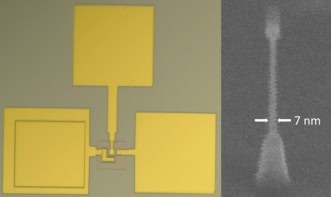
Nitrogen is one of the most abundant elements on the planet, but until the turn of the 20th century nitrogen compounds were still hard to come by. So-called nitrogen fixation in compounds such as ammonia and amides is crucial for fertilizers and other industrial chemicals, but producing ammonia or amides from nitrogen means wrestling with the triply bonded nitrogen dimolecule – one of the strongest bonds known to man.
Fritz Haber and his assistant Robert Le Rossignol developed a process that could efficiently produce ammonia from nitrogen using a combination of catalysts and high-pressure devices. Working with Carl Bosch at BASF Haber showed that the process could be used in industrial production of ammonia. Yet while the Haber–Bosch process was massively more efficient than anything previously attempted, allowing vast increases in food production to serve a ballooning population, the process requires temperatures of around 450 °C and pressures of 300 bar. As a result, this process alone is responsible for 2% of the world’s energy consumption.
It’s significant, then, that Marinella Mazzanti and colleagues at Ecole Polytechnique Fédérale de Lausanne (EPFL) showed in 2017 that ammonia could be synthesized from nitrogen and hydrogen under ambient conditions by using a catalyst made up of two uranium ions and three potassium centres bridged by a nitride group. This week, in new research published in Nature Chemistry, they report successful ammonia synthesis using a similar catalyst but with an oxide bridging group instead of nitrogen. With this new catalyst, Mazzanti and colleagues also showed that they could produce cyanamide, another industrially valuable chemical for agriculture and pharmaceuticals, in ambient conditions by cleaving the uranium-bound dinitrogen with carbon monoxide.
The Nobel and the not so noble
The result is particularly timely, since this year marks 100 years since Haber was awarded the 1918 Nobel Prize for Chemistry for his contribution to the development of the Haber–Bosch process. (Bosch also won the prize in 1931.) However, as a result of subsequent research projects connected to the First World War, Haber has also earned the less covetable accolade of “Father of Chemical Warfare”.
In fact, in many instances over the course of his life Haber seemed to attract death and trauma like a plague. His wife shot herself soon after he personally oversaw the first successful deployment of chlorine as a weapon. She was found not quite yet dead by their son Hermann Haber – who also ended his own life in later adulthood, after fathering three daughters. Hermann’s eldest daughter committed suicide as well, soon after her research into an antidote for the effects of chlorine gas was terminated to resource the race to build an atomic bomb.
Following his grisly services to the nation during the First World War, Haber found his life in Germany untenable when Hitler assumed power, as a result of his Jewish heritage. He left Germany along with his family in 1933.
Haber’s involvement in the development of chemical weapons during the First World War sparked controversy over his award of a Nobel Prize – to which he is said to retort that most of Nobel’s money came from armaments. In fact the First World War saw him pit his wits against another Nobel laureate, Victor Grignard, who was also working in chemical weaponry, in this case on the manufacture of phosgene and a detector for mustard gas.
Writing about Oppenheimer
The Second World War too took its toll on the course of progress in science, as some of the world’s most talented researchers found themselves staring out at a mushroom cloud with the haunting realization – for at least a couple of them – that despite the cerebral thrill of scientific endeavour, the means could not justify the end. While it is easy to wish some things could be undiscovered, most research aims to provide new solutions that offer a brighter future for all, and the majority of discoveries – like this week’s new ambient active catalyst – give great cause for hope.



